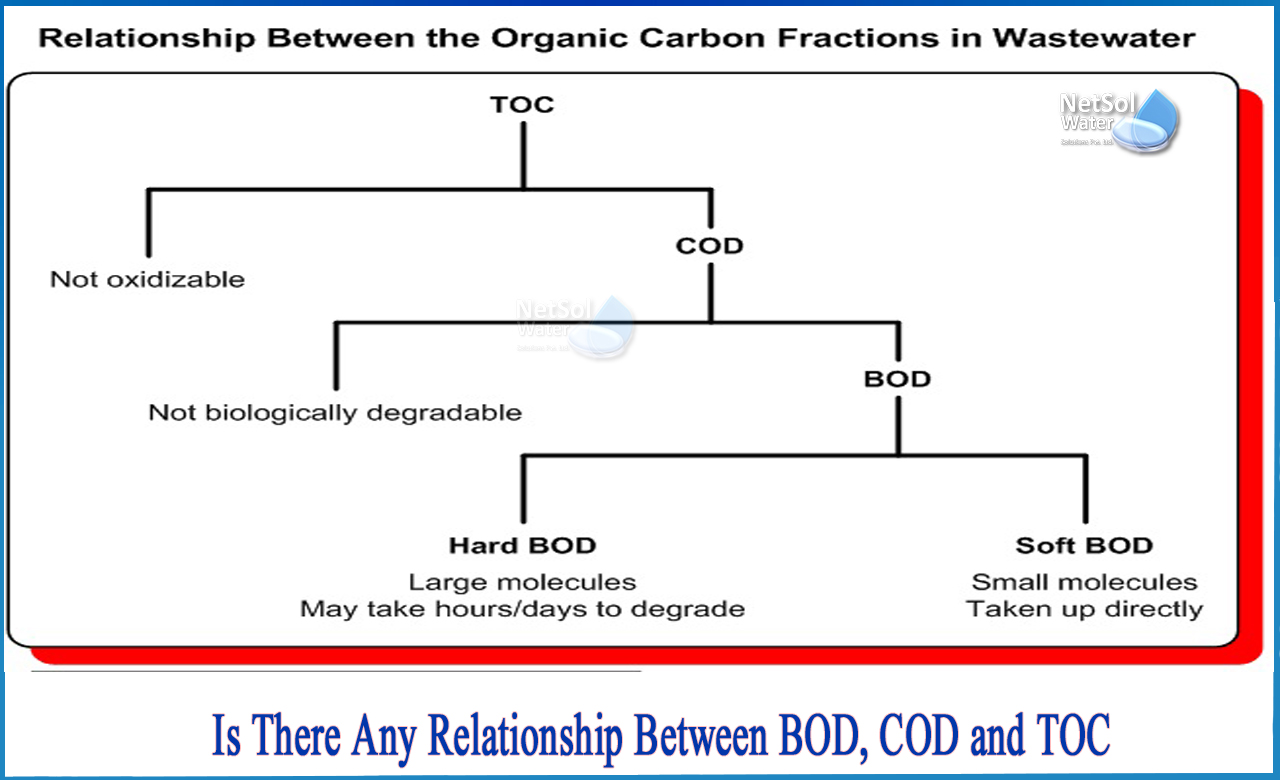Is there any relationship between BOD, COD and TOC?
The 3 ways in which organic strength of waste water can be measured:
1) BOD:Biochemical oxygen demand
2) COD: Chemical oxygen demand
3) TOC: Total organic carbon
BOD is commonly used as a measure of the organic concentration entering and exiting municipal wastewater treatment plants. COD will be used more frequently in industrial wastewater systems to measure the organic concentration moving through the treatment plant.
The BOD test determines the amount of oxygen consumed by microorganisms as they oxidise (consume or eat) soluble organic matter in wastewater. However, the BOD test is an unreliable method of determining the amount of organic matter in water. The test only approximates the amount of oxygen required (absorbed or consumed) by wastewater while exposed to the atmosphere or oxygen for an extended duration. As a result of organic matter oxidation, toxic substances in wastewater inhibit or even prevent bacterial growth. This causes the test result to be lower than the actual amount of organic matter present.
In industrial waste waters, the BOD test has limitations in some applications, which frequently contains cyanides, heavy metal ions, and other microorganism-toxic substances. When microorganisms are poisoned by toxic substances, they lose their ability to oxidise waste, rendering the BOD test ineffective as a measure of organic pollution.
Rather than the BOD test, most industrial wastewater treatment plants use chemical oxygen demand (COD). Since the BOD test takes approximately five days to complete, BOD results only provide historical data and do not allow for rapid water quality assessment for optimal process control. Because of the often highly variable chemical composition and strength of industrial wastewater, a much faster method for measuring organic concentration is required, which is why the 2-hours COD test or, in some plants, the 30-minutes TOC analysis is used.
Municipal wastewater treatment plants have much greater consistency (less variation) in the strength of the influent organic loading, allowing the municipality to wait five days to determine the organic concentration entering the plant.
The TOC test can be taken anywhere from a few minutes to several hours just to complete, and the data obtained from BOD or COD analysis is more useful than the data obtained from a TOC analysis. The TOC test does not distinguish between compounds which contains the same number of carbon atoms at different phases of oxidation, resulting in different oxygen demand results. The results reflect the chemical pollutants' original oxidation state because BOD and COD tests directly measure the amount of oxygen required just to stabilise a waste sample.
The results of the COD test can also be used to estimate the BOD results.
There is an evidence-based relationship between BOD, COD, and TOC.However, for each sample location in a wastewater treatment plant, a specific relationship must be established. The COD test is useful for monitoring and process control once the correlation has been established. There are some ration given in APHA or as per Indian standards that determine the relationship between the three.
For more information, contact Netsol Water.
Netsol Water is Greater Noida-based leading water & wastewater treatment plant manufacturer. We are industry's most demanding company based on client review and work quality. We are known as best commercial RO plant manufacturers, industrial RO plant manufacturer, sewage treatment plant manufacturer, Water Softener Plant Manufacturers and effluent treatment plant manufacturers. Apart from this 24x7 customer support is our USP. Call on +91-9650608473, or write us at enquiry@netsolwater.com for any support, inquiry or product-purchase related query.



